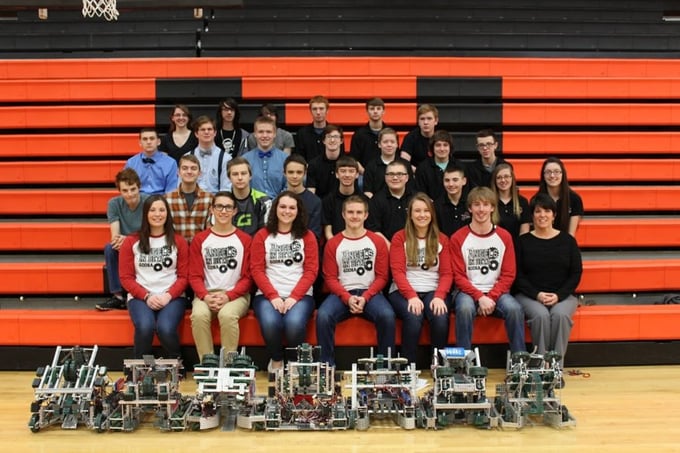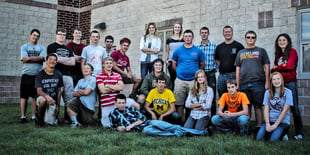Jodie Kavanagh earned a B.S. in industrial engineering from Penn State University; worked at Honda of America Manufacturing for eight years full time and ten years part time; earned a Masters in Education AYA Math, and is a VEX robotics coach whose students have qualified for the VEX Robotics World Championship four times. Jodie teaches at North Union High School in Richwood, Ohio.
This is my seventh year teaching at North Union High School in Ohio. My first degree is in industrial engineering, and I worked at Honda Manufacturing prior getting my teaching degree. I am very grateful that I get to teach both math and engineering. PLTW gives me the platform to share my experience with my students. I really believe in the program, and I think highly of the curriculum. I teach both Principles of Engineering (POE) and Digitial Electronics (DE), and because our school is small, I switch between these two classes every other year. I truly enjoy both classes and look forward as I go back and forth between them.
POE is an excellent class to help students decide if they are interested in engineering. I tell my kids that by the end of the class, they will know if they want to pursue a four-year engineering degree. If my kids enjoy the hands-on portion of the class but struggle with (or just don’t enjoy) the calculations, then I recommend a two-year program. I also consider it a win if a student does not like the class at all. Figuring out that engineering isn’t the program for them while they are still in high school is an absolute plus.
In POE, I always end Unit 1 with a mousetrap car competition. My students use only “trash” to build their cars. Once this project is done, I share thoughts on the need for ALL engineers to be comfortable with hand tools. I urge them to get their hands dirty whenever possible.
In addition, I really enjoy the beam-deflection activity in the Strength of Materials unit. In this unit, I have also found that virtually breaking the dog bone is just as effective as using an SSA machine. (Our machine is outdated.) However, there is huge value in using real weights with a bucket to break the balsa wood trusses. Feeling that amount of weight means much more than just getting a number out of a machine.
Finally, I love the marble sorter project! It is an excellent way to summarize the class.
I enjoy teaching DE because it is so logical. On the surface it seems like such a difficult class; however, many of my students think it is easier than POE because it is much more focused. Starting out with soldering and the random number generator is a great hook for the class. I really follow all of the advice and sample material that I received in training.
Last year, my students completed the new Adreno Unit. Once it was complete, I had them get out the old Boe Bots and make a video of the robots dancing. This was a fun final project. Here is the video for you to enjoy!
I have also had a lot of luck with our VEX robotics club. In the past five years, we have gone from six students in four robot teams, to 30 students in seven robot teams. We have qualified for the world championship a few times. As my student’s capabilities grow, the competitions also get more challenging and fun!
PLTW’s blog is intended to serve as a forum for ideas and perspectives from across our network. The opinions expressed are those of each guest author.


